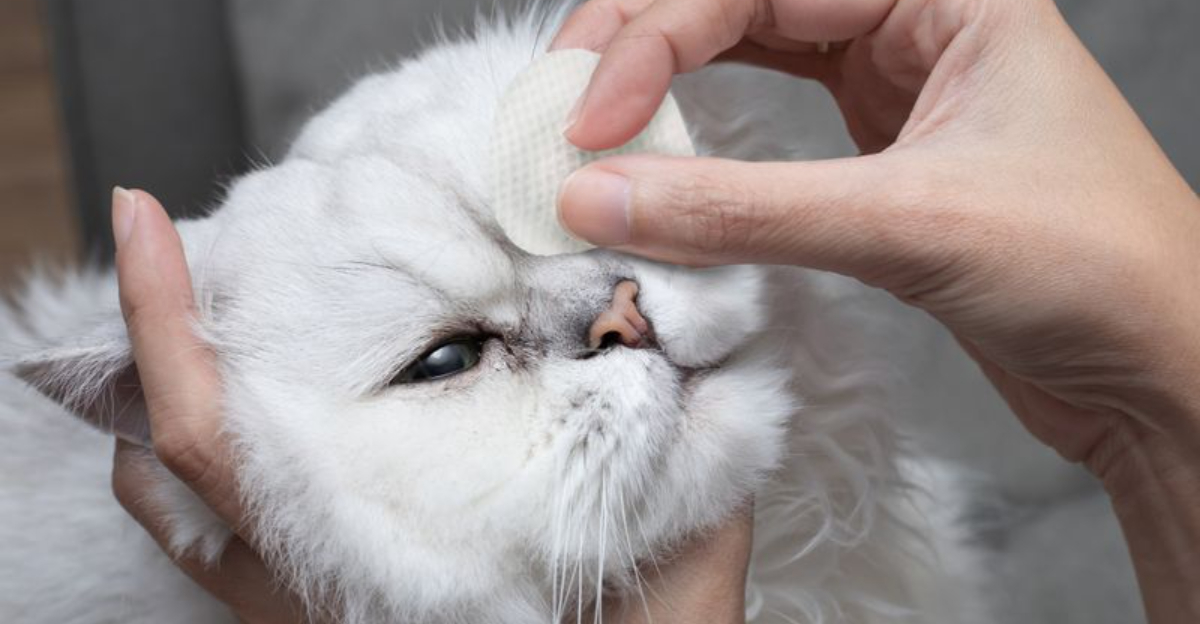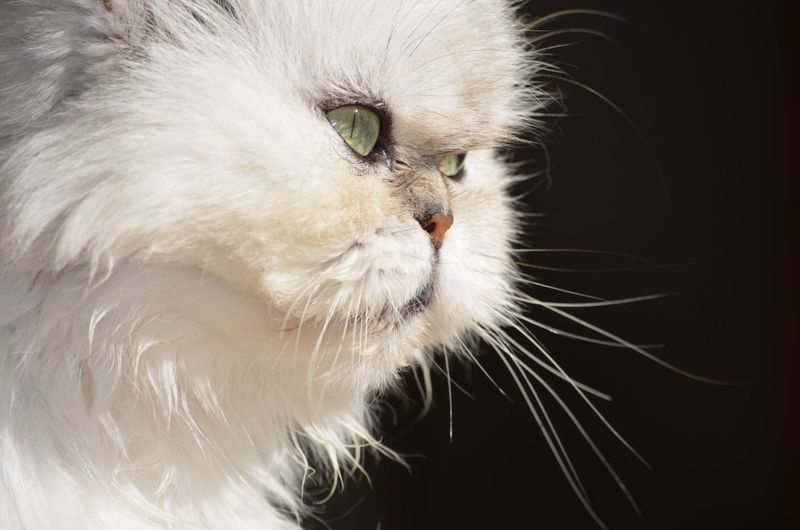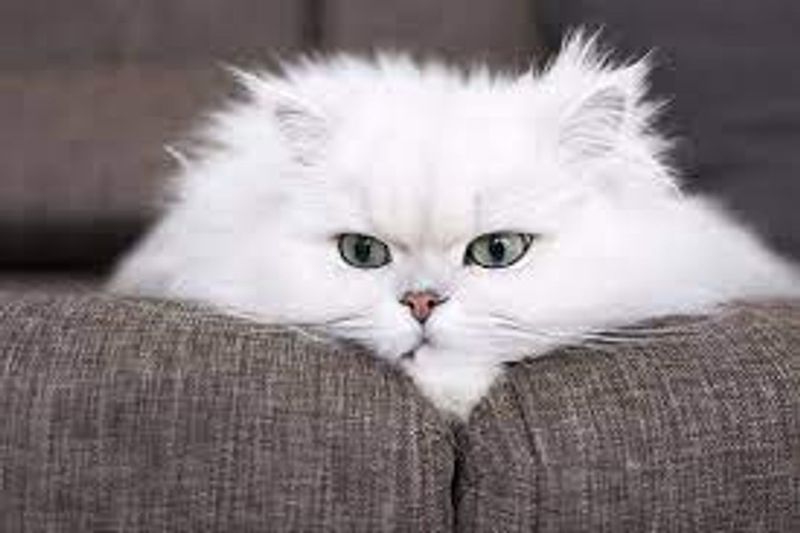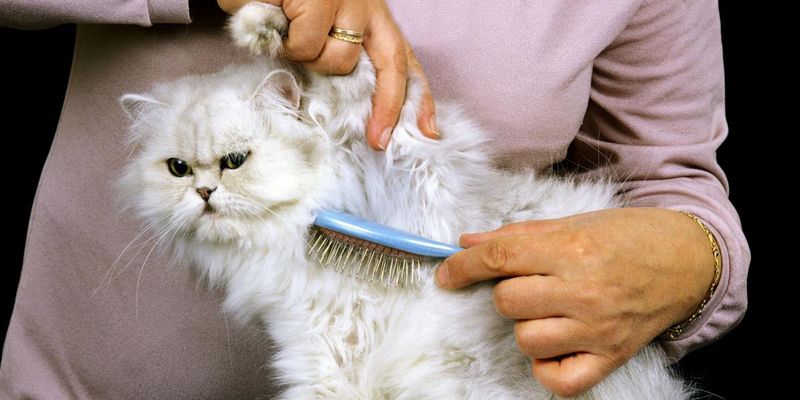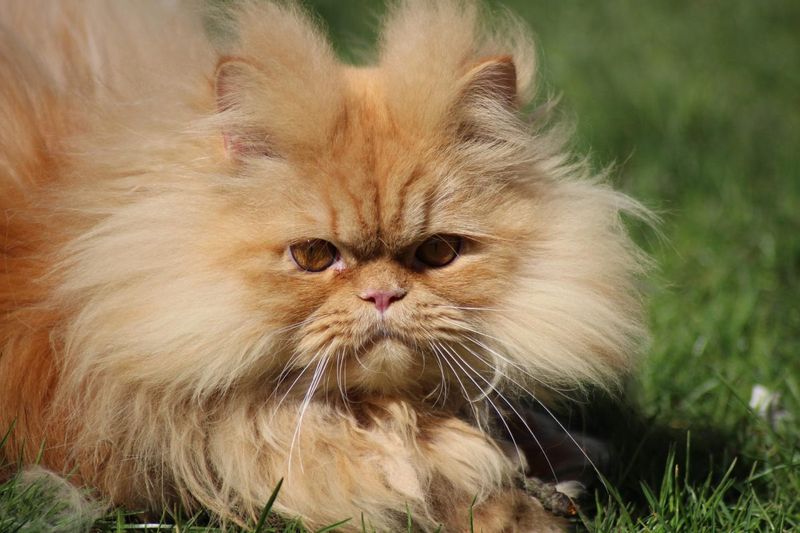📖 Table of Content:
- 1. High Grooming Maintenance
- 2. Prone to Health Issues
- 3. Regular Eye Cleaning
- 4. Ownership Costs Can Pile Up
- 5. Not Ideal in Hot Climates
- 6. They’re Not the Most Active
- 7. Litter Box Issues
- 8. Shedding All Year Round
- 9. They’re Not Very Vocal About Needs
- 10. May Not Get Along With Kids or Active Households
With their flowing coats, expressive eyes, and calm demeanor, Persians earned their place as one of the world’s most adored cat breeds. Whether you’ve seen them in commercials, at cat shows, or sprawled luxuriously on a velvet cushion, it’s easy to fall for their charms.
However, beneath the glamour lies a set of challenges that potential cat owners should carefully consider. Persians aren’t your typical low-maintenance feline. Their beauty comes at a cost—one that includes time, money, and a great deal of patience. Without preparation, that dream of owning a Persian can quickly turn into a demanding reality.
This article explores ten drawbacks of owning a Persian cat, offering an honest look into what life with one of these fluffy companions really entails. While these cats have many lovable traits, understanding their unique needs is essential for making an informed decision. Let’s dive into the not-so-glamorous side of Persian cat ownership.
1. High Grooming Maintenance
Every strand of a Persian cat’s luxurious coat demands attention. Neglecting their fur for even a day can lead to severe tangles that are painful for the cat and difficult to remove. Unlike short-haired breeds, Persians cannot self-manage their grooming effectively. Owners must be committed to daily brushing, detangling, and sometimes using conditioning sprays. Professional grooming may be necessary every few months, adding to the long-term costs. Hairballs are also common due to their grooming habits and can lead to digestive issues. This level of maintenance isn’t ideal for someone with a busy lifestyle or limited patience.
2. Prone to Health Issues
Known for their adorable flat faces, Persians unfortunately come with a laundry list of genetic and anatomical issues. Brachycephalic features often cause breathing difficulties, especially in warm or stressful environments. Many also suffer from polycystic kidney disease (PKD), a hereditary condition that can impact quality of life and lifespan. Their jaw structure can make eating difficult, requiring specific bowl types or food textures. They may also be more prone to respiratory infections. Dental care is another hurdle due to crowded or misaligned teeth. Frequent vet visits become a norm rather than an exception.
3. Regular Eye Cleaning
Tear staining is one of the messier parts of Persian cat care. Because of their facial anatomy, their eyes often leak, creating damp fur that leads to brown staining and potential infections. Owners must regularly wipe their cat’s eyes—sometimes multiple times a day—with soft pads or vet-recommended cleaners. Left unchecked, buildup can irritate the skin and attract bacteria. This routine is not only time-consuming but may be stressful for the cat if not done gently. For households unaccustomed to such grooming needs, it may feel overwhelming. Skipping eye care can lead to chronic discomfort and medical complications.
4. Ownership Costs Can Pile Up
Financially speaking, Persians are one of the more expensive cat breeds to maintain. Their health issues alone often require frequent vet visits, blood work, and specialized medications. Additionally, professional grooming fees, special diets, grooming tools, and cleaning supplies add to the recurring costs. Pet insurance is strongly advised, but it too becomes an ongoing expense. Even basic care, like high-quality food and litter, may cost more because of their sensitivities. Budget-conscious pet owners may find the total upkeep surprisingly high. Over time, these expenses may rival or exceed those of some dog breeds.
5. Not Ideal in Hot Climates
Their long, thick coats and shortened airways make Persian cats particularly vulnerable to heat. Unlike other cats that may seek out sunny spots, Persians often retreat to cooler areas and require fans or air-conditioning in warmer months. Heatstroke is a very real threat for this breed. Owners living in tropical or very warm climates must be extra cautious and provide ample hydration and shade. Overexertion—even mild play—in heat can cause breathing distress. Their low tolerance for heat can also limit outdoor time. For this reason, Persians are best suited to climate-controlled indoor environments year-round.
6. They’re Not the Most Active
Energy-wise, Persian cats are more like gentle statues than bouncy balls of fluff. They enjoy lounging, watching the world go by, and being admired, but they rarely engage in active play without encouragement. If you’re looking for a cat to chase laser pointers or climb cat trees daily, you may be disappointed. Their temperament is more suited to quiet, low-energy households. They may bond with their humans, but on their own quiet terms. Children or active pets might find them boring or unengaging. Overall, Persians are better companions for calm, patient individuals.
7. Litter Box Issues
Their thick rear-end fur is notorious for trapping litter and feces, making hygiene around the litter box more labor-intensive. Owners may need to trim their fur around the hindquarters regularly—a practice called a “sanitary trim.” Accidents outside the box may occur if the cat associates the litter box with discomfort or uncleanliness. Litter tracking is also common, as their fluffy paws pick up particles that end up all over the house. Unsanitary conditions can quickly lead to infections or skin irritations. Regular cleaning and the right litter type help, but vigilance is key. A clean Persian is a healthy Persian.
8. Shedding All Year Round
Unlike some breeds that shed seasonally, Persians tend to shed consistently all year long. Their fur ends up on clothing, furniture, floors, and sometimes even in your food. A high-quality vacuum cleaner and lint rollers become indispensable household tools. Air purifiers may also be needed for allergy-prone individuals. Brushing does help reduce loose fur, but it doesn’t eliminate the issue. Shedding also means more frequent grooming appointments and a greater workload for the owner. If you value a spotless home or have family members with allergies, this might be a deal-breaker.
9. They’re Not Very Vocal About Needs
Their gentle demeanor can sometimes work against them. Unlike more vocal or reactive cats, Persians may not show clear signs of pain, illness, or discomfort. This means owners must stay extra attentive to subtle changes in behavior, appetite, or posture. A quiet withdrawal or a change in sleeping patterns may be the only warning signs of a serious issue. Regular vet check-ups become all the more important. Because they don’t often “complain,” problems may go unnoticed until they become more severe. Knowing your cat’s baseline behavior is essential for catching issues early.
10. May Not Get Along With Kids or Active Households
If you live in a bustling household with children, loud noises, or multiple active pets, a Persian might not thrive. These cats prefer tranquility and a predictable routine. Loud environments can cause stress, leading to hiding, over-grooming, or even illness. While they can tolerate some affection, they typically dislike being handled roughly or carried around. Introducing a Persian to a busy home requires patience, respect for their space, and clear boundaries. They’re not fans of chaos or surprise visitors. Think of them more as a sophisticated roommate than a cuddly companion.
